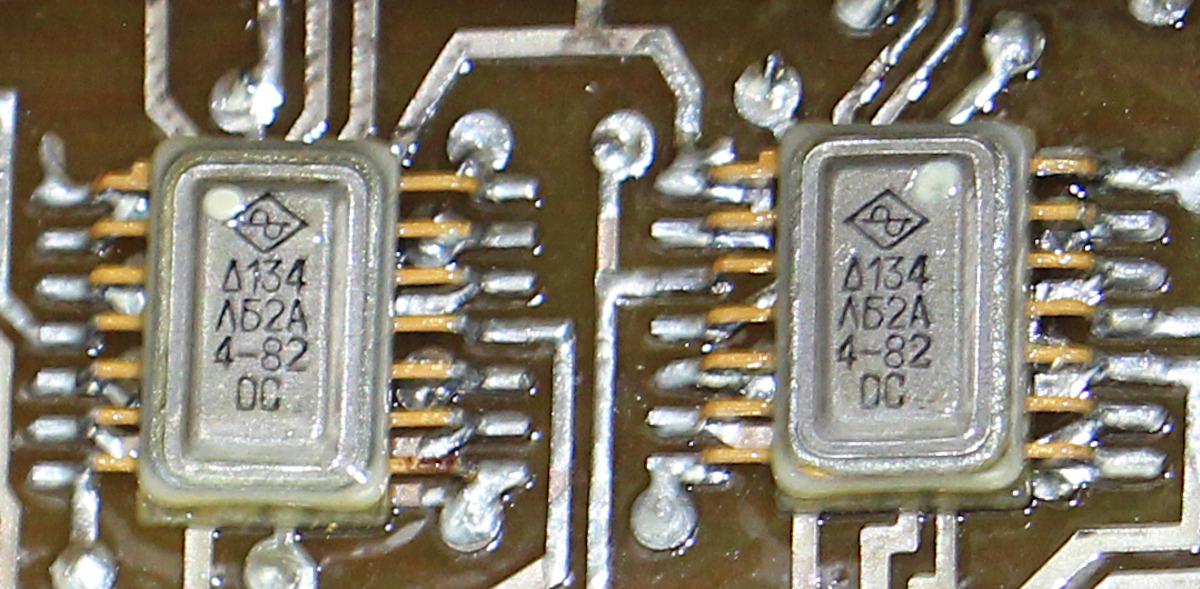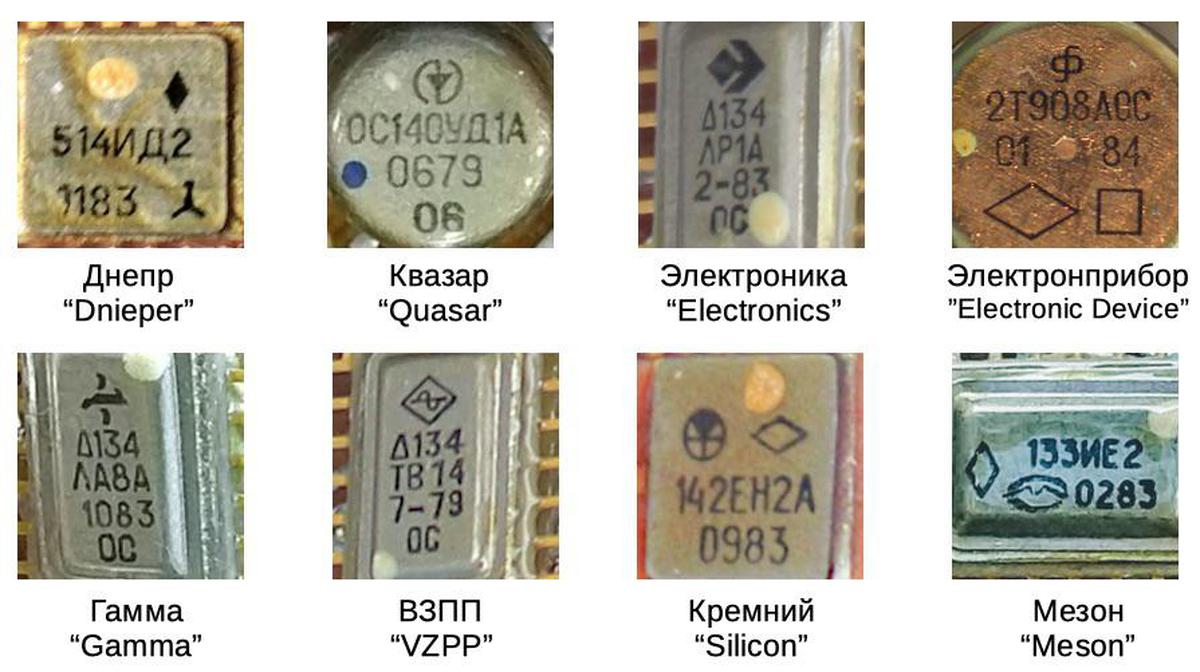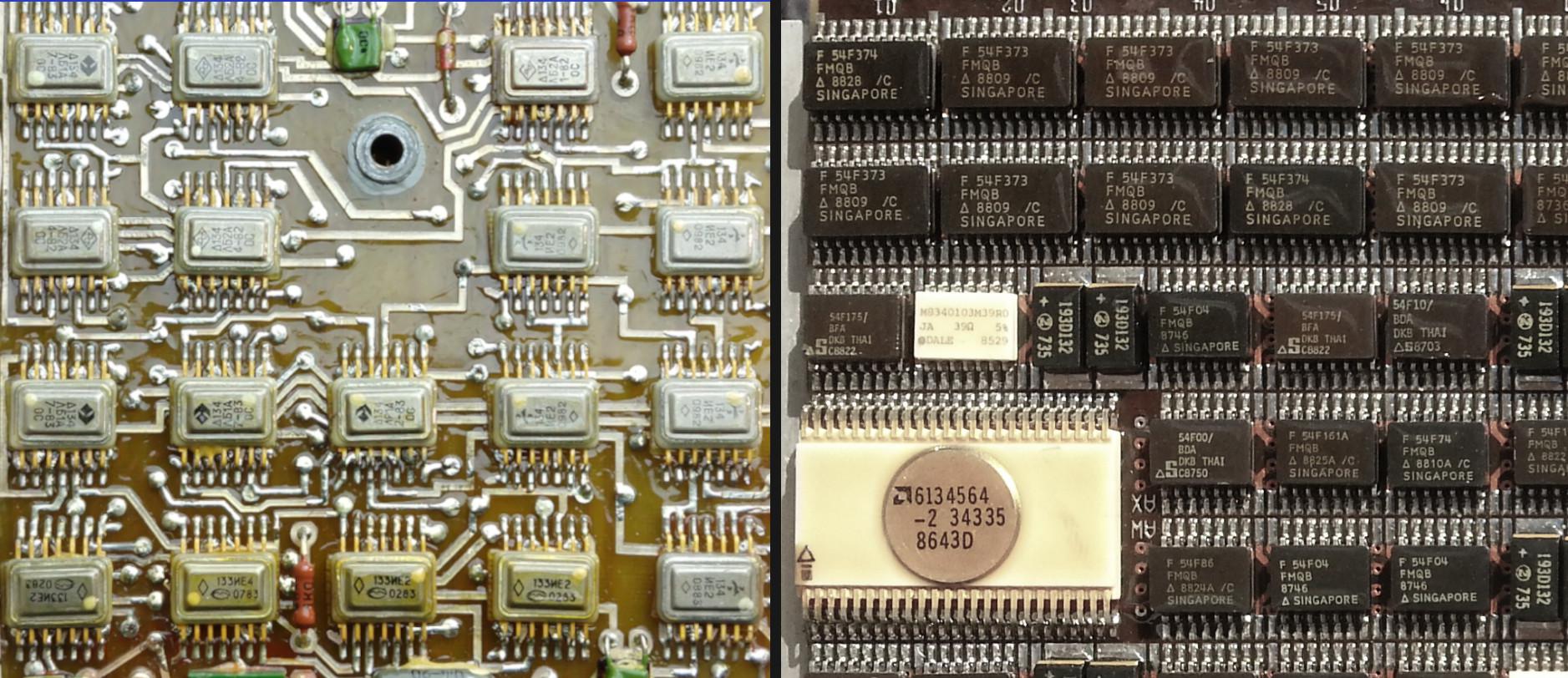You are using an out of date browser. It may not display this or other websites correctly.
You should upgrade or use an alternative browser.
You should upgrade or use an alternative browser.
Inside a Soyuz capsule mission clock
- Thread starter Winston
- Start date

Help Support The Rocketry Forum:
This site may earn a commission from merchant affiliate
links, including eBay, Amazon, and others.
Winston
Lorenzo von Matterhorn
- Joined
- Jan 31, 2009
- Messages
- 9,560
- Reaction score
- 1,749
Inside the digital clock from a Soyuz spacecraft
https://www.righto.com/2020/01/inside-digital-clock-from-soyuz.html
Excerpt:
Soviet integrated circuits
Next, I'll discuss the integrated circuits used in the clock. The clock is built mostly from TTL integrated circuits, a type of digital logic that was popular in the 1970s through the 1990s. (If you've done hobbyist digital electronics, you probably know the 7400-series of TTL chips.) TTL chips were fast, inexpensive and reliable. Their main drawback, however, was that a TTL chip didn't contain much functionality. A basic TTL chip contained just a few logic gates, such as 4 NAND gates or 6 inverters, while a more complex TTL chip implemented a functional unit such as a 4-bit counter. Eventually, TTL lost out to CMOS chips (the chips in modern computers), which use much less power and are much denser.
Because each chip in the Soyuz clock didn't do very much, the clock required many boards of chips to perform its functions. For example, each digit of the clock requires a counter chip, as well as a couple of logic chips to increment and clear that digit as needed, and a chip to drive the associated 7-segment LED display. Since the clock displays 10 digits, that's 40 chips already. Additional chips handle the buttons and switches, implement the alarm, keep track of the stopwatch state, run the oscillator, and so forth, pushing the total to over 100 chips.
One nice thing about Soviet ICs is that the part numbers are assigned according to a rational system, unlike the essentially random numbering of American integrated circuits.13 Two letters in the part number indicate the function of the chip, such as a logic gate, counter, flip flop, or decoder. For example, the IC below is labeled "Δ134 ΛБ2A". The series number, 134, indicates the chip is a low-power TTL chip. The "Л" (L) indicates a logic chip (Логические), with "ЛБ" indicating NAND/NOR logic gates. Finally, "2" indicates a specific chip in the ЛБ category. (The 134ЛБ2 chip's functionality is two 4-input NAND gates and an inverter, a chip that doesn't have an American counterpart.)

The logos on the integrated circuits reveal that they were manufactured by a variety of companies. Some of the chips in the clock are shown below, along with the name of the manufacturer and its English translation. More information on Soviet semiconductor logos can be found here and here.

Comparison with US technology
How does the Soyuz clock compare with US technology? When I first looked at the clock I would have guessed it was manufactured in 1969, not 1984, based on the construction and the large number of simple flat-pack chips. In comparison, American technology in 1984 produced the IBM PC/AT and the Apple Macintosh. It seemed absurd for the clock to use boards full of TTL chips a decade after the US had produced single-chip digital watches.16 However, the comparison turned out to be not so simple.
To compare the Soyuz clock with contemporary 1980s American space electronics, I looked at a board from the Space Shuttle's AP-101S computer.17 The photo below shows circuitry from the Soyuz clock (left) and the Shuttle computer (right). Although the Shuttle computer is technologically more advanced, the gap was smaller than I expected. Both systems were built from TTL chips, although the Shuttle computer used a faster generation of chips. Many Shuttle chips are slightly more complex; note the larger 20-pin chips at the top of the board. The large white chip is significantly more complex; it is an AMD Am2960 memory error correction chip. The Shuttle's printed-circuit board is more advanced, with multiple layers rather than two layers, allowing the chips to be packed 50% more densely. At the time, the USSR was estimated to be about 8 to 9 years behind the West in integrated circuit technology;15 this is in line with the differences I see between the two boards.
What surprised me, though, was the similarities between the Shuttle computer and the Soviet clock. I expected the Shuttle computer to use 1980s microprocessors and be a generation ahead of the Soyuz clock, but instead the two systems both use TTL technology, and in many cases chips with almost identical functionality. For example, both boards use chips that implement four NAND gates. (See if you can find the 134ΛБ1A chip on the left and the 54F00 on the right.)

https://www.righto.com/2020/01/inside-digital-clock-from-soyuz.html
Excerpt:
Soviet integrated circuits
Next, I'll discuss the integrated circuits used in the clock. The clock is built mostly from TTL integrated circuits, a type of digital logic that was popular in the 1970s through the 1990s. (If you've done hobbyist digital electronics, you probably know the 7400-series of TTL chips.) TTL chips were fast, inexpensive and reliable. Their main drawback, however, was that a TTL chip didn't contain much functionality. A basic TTL chip contained just a few logic gates, such as 4 NAND gates or 6 inverters, while a more complex TTL chip implemented a functional unit such as a 4-bit counter. Eventually, TTL lost out to CMOS chips (the chips in modern computers), which use much less power and are much denser.
Because each chip in the Soyuz clock didn't do very much, the clock required many boards of chips to perform its functions. For example, each digit of the clock requires a counter chip, as well as a couple of logic chips to increment and clear that digit as needed, and a chip to drive the associated 7-segment LED display. Since the clock displays 10 digits, that's 40 chips already. Additional chips handle the buttons and switches, implement the alarm, keep track of the stopwatch state, run the oscillator, and so forth, pushing the total to over 100 chips.
One nice thing about Soviet ICs is that the part numbers are assigned according to a rational system, unlike the essentially random numbering of American integrated circuits.13 Two letters in the part number indicate the function of the chip, such as a logic gate, counter, flip flop, or decoder. For example, the IC below is labeled "Δ134 ΛБ2A". The series number, 134, indicates the chip is a low-power TTL chip. The "Л" (L) indicates a logic chip (Логические), with "ЛБ" indicating NAND/NOR logic gates. Finally, "2" indicates a specific chip in the ЛБ category. (The 134ЛБ2 chip's functionality is two 4-input NAND gates and an inverter, a chip that doesn't have an American counterpart.)

The logos on the integrated circuits reveal that they were manufactured by a variety of companies. Some of the chips in the clock are shown below, along with the name of the manufacturer and its English translation. More information on Soviet semiconductor logos can be found here and here.

Comparison with US technology
How does the Soyuz clock compare with US technology? When I first looked at the clock I would have guessed it was manufactured in 1969, not 1984, based on the construction and the large number of simple flat-pack chips. In comparison, American technology in 1984 produced the IBM PC/AT and the Apple Macintosh. It seemed absurd for the clock to use boards full of TTL chips a decade after the US had produced single-chip digital watches.16 However, the comparison turned out to be not so simple.
To compare the Soyuz clock with contemporary 1980s American space electronics, I looked at a board from the Space Shuttle's AP-101S computer.17 The photo below shows circuitry from the Soyuz clock (left) and the Shuttle computer (right). Although the Shuttle computer is technologically more advanced, the gap was smaller than I expected. Both systems were built from TTL chips, although the Shuttle computer used a faster generation of chips. Many Shuttle chips are slightly more complex; note the larger 20-pin chips at the top of the board. The large white chip is significantly more complex; it is an AMD Am2960 memory error correction chip. The Shuttle's printed-circuit board is more advanced, with multiple layers rather than two layers, allowing the chips to be packed 50% more densely. At the time, the USSR was estimated to be about 8 to 9 years behind the West in integrated circuit technology;15 this is in line with the differences I see between the two boards.
What surprised me, though, was the similarities between the Shuttle computer and the Soviet clock. I expected the Shuttle computer to use 1980s microprocessors and be a generation ahead of the Soyuz clock, but instead the two systems both use TTL technology, and in many cases chips with almost identical functionality. For example, both boards use chips that implement four NAND gates. (See if you can find the 134ΛБ1A chip on the left and the 54F00 on the right.)

Winston
Lorenzo von Matterhorn
- Joined
- Jan 31, 2009
- Messages
- 9,560
- Reaction score
- 1,749
They externally correct via original circuitry reproduction and modification the flawed backup crystal oscillator design which causes a 2 second per day drift. The internal crystal clock circuit is not fixed.
Taming the Glitches in our Soyuz Space Clock Crystal Oscillator
In this rather longish video we get to the bottom of the glitching issues we had seen in the crystal oscillator of our Soyuz space clock. Which gets us on a detour to reverse engineering a Soviet TTL chip, look at a quartz crystal on the VNA, and fight general RF electronic mayhem.
00:00 Glitch investigation
04:39 Inside a vintage Russian TTL chip
08:16 Quartz crystals and oscillators
21:15 Debugging the glitchy oscillator
32:44 Success and conclusion
Ken Shirriff article on reverse engineering the Soviet TTL chip:
https://www.righto.com/2020/03/looking-inside-vintage-soviet-ttl-logic.html
Taming the Glitches in our Soyuz Space Clock Crystal Oscillator
In this rather longish video we get to the bottom of the glitching issues we had seen in the crystal oscillator of our Soyuz space clock. Which gets us on a detour to reverse engineering a Soviet TTL chip, look at a quartz crystal on the VNA, and fight general RF electronic mayhem.
00:00 Glitch investigation
04:39 Inside a vintage Russian TTL chip
08:16 Quartz crystals and oscillators
21:15 Debugging the glitchy oscillator
32:44 Success and conclusion
Ken Shirriff article on reverse engineering the Soviet TTL chip:
https://www.righto.com/2020/03/looking-inside-vintage-soviet-ttl-logic.html
- Joined
- Feb 3, 2012
- Messages
- 6,349
- Reaction score
- 5,562
The solder joints on those Soyuz flat packs look like some of the Eggtimer stuff that people have sent to me for remediation. BTW, low gate density isn't necessarily a bad thing in space-rated electronics... they're more immune to cosmic ray glitches than the higher density stuff that works just fine down hear on Earth, where we have the atmosphere and Van Allen belts to deflect them.
Similar threads
- Replies
- 3
- Views
- 276
- Replies
- 2
- Views
- 518
- Replies
- 62
- Views
- 4K



